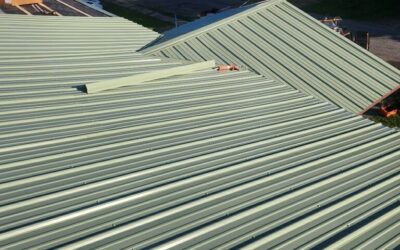
Residential Roofing Replacement: A Comprehensive Guide for Homeowners
Replacing your roof is a significant investment that ensures the safety, comfort, and value of your home. Whether you’re dealing with an aging roof, storm damage, or simply upgrading your home’s aesthetics, understanding the process of residential roofing replacement is crucial. This guide provides an in-depth look into the steps, costs, materials, and considerations involved in residential roofing services
Table of Contents
- Understanding Roof Replacement
- Signs You Need a Roof Replacement
- Choosing the Right Roofing Material
- The Roof Replacement Process
- Costs Involved in Roof Replacement
- Hiring a Roofing Contractor
- Maintaining Your New Roof
- Conclusion
Understanding Roof Replacement
Roof replacement involves removing the existing roofing materials and installing new ones. This process is typically necessary when repairs are insufficient, or the roof has reached the end of its lifespan. A new roof not only enhances the curb appeal of your home but also improves energy efficiency and protects against weather elements.
Signs You Need a Roof Replacement
It’s essential to recognize when your roof requires replacement. Common signs include:
- Age of the Roof: Most roofing materials have a lifespan of 20-50 years. If your roof is approaching or has surpassed this age, replacement may be necessary.
- Shingle Damage: Curling, cracking, or missing shingles indicate deterioration.
- Leaks and Water Damage: Persistent leaks or water stains on ceilings and walls suggest underlying issues.
- Granule Loss: Excessive granules in gutters can signal that shingles are wearing out.
- Sagging Roof Deck: A sagging roof deck may indicate structural problems requiring immediate attention.
Choosing the Right Roofing Material
Selecting the appropriate roofing material is crucial for durability, aesthetics, and cost. Common options include:
- Asphalt Shingles: Affordable and widely used, with a lifespan of 20-30 years.
- Metal Roofing: Durable and energy-efficient, lasting 40-70 years.
- Clay or Concrete Tiles: Long-lasting (100+ years) and fire-resistant, suitable for hot climates.
- Slate: Elegant and durable, with a lifespan of 60-150 years.
- Wood Shingles/Shakes: Natural appearance, requiring maintenance, with a lifespan of 30-40 years
- Rubber Roofing: Ideal for flat roofs, offering excellent waterproofing and longevity.
Consider factors like climate, budget, and desired aesthetics when choosing a material. Or if you have residential roof repair
The Roof Replacement Process
Replacing a roof involves several key steps:
- Preparation: Clear the area around your home to allow safe access for workers and equipment.
- Tear-Off: Remove the existing roofing materials down to the deck.(
- Deck Inspection: Check for damage or rot and replace any compromised sections.
- Underlayment Installation: Apply a protective layer to prevent moisture infiltration.
- Flashing Installation: Install metal flashing around chimneys, vents, and valleys to direct water away from critical areas.
- New Roofing Material Installation: Install the chosen roofing material according to manufacturer specifications.
- Cleanup: Remove debris and ensure the area is safe and tidy.
Costs Involved in Roof Replacement
The cost of replacing a roof varies based on several factors:
- Roof Size: Larger roofs require more materials and labor.
- Material Choice: Premium materials like slate or metal increase costs.
- Roof Complexity: Complex roof designs with multiple angles and features can raise labor costs.
- Labor Rates: Vary by region and contractor experience.
- Removal of Old Roof: Disposal fees for old materials add to the total cost.
On average, homeowners can expect to pay between $5,000 and $10,000 for a roof replacement, depending on these variables.
Hiring a Roofing Contractor
Choosing a reputable roofing contractor is vital for a successful roof replacement:
- Research: Look for contractors with positive reviews and a solid reputation.
- Licensing and Insurance: Ensure they are licensed and carry appropriate insurance.
- Written Estimates: Obtain detailed written estimates from multiple contractors.
- Warranty: Verify the warranty offered on both materials and workmanship.
- References: Ask for references from previous clients to gauge satisfaction.
Maintaining Your New Roof
Proper maintenance extends the life of your new roof:
- Regular Inspections: Conduct annual inspections, especially after storms.
- Clean Gutters: Keep gutters free of debris to prevent water damage.
- Trim Overhanging Branches: Prevent damage from falling branches.
- Address Issues Promptly: Repair minor issues before they become major problems.
Conclusion
Replacing your roof is a significant decision that impacts your home’s safety, comfort, and value. By understanding the process, choosing the right materials, and working with reputable professionals, you can ensure a successful roof replacement. Regular maintenance will further protect your investment and keep your home secure for years to come. Residential roofing in Ashtabula is Something S&K Provides quality
 (440) 307-2060
(440) 307-2060

